Raising Awareness
Capacity Building
A project like Pawikan Patrol cannot just be imposed to be successful. It stands and falls with the interest and active participation of the community.
To jump-start the project, PCP experts of BMB/DENR travelled from their Manila office to share their knowledge about local sea turtles. Besides a lot of hands-on demonstrations and exercises, this 3-day-seminar for adults also included advice on national and international laws that govern the protection of sea turtles, their foraging and nesting habitats.
Note: the sea turtle shown in this slide show is a life-size replica made from fiberglass.
Capacity Building
Info - Wall
A valuable information tool is Pawikan Patrol's "Information Wall" next to the hatchery site. Many pedestrians pass by on a daily basis including the youth of Sigman on their way to the Camurong National High School in Bugtong. A good location to update the public on the next hatching event, to display the results of previous nestings, to inform about local sea turtle species and to remind about the National Law - stiff penalties are applicable for persons who are caught poaching pawikan eggs, destroying nests or deliberately harming sea turtles in any way.
All basic information is also displayed in Tagalog for easier understanding.
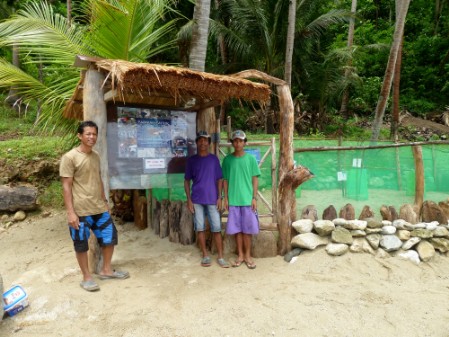
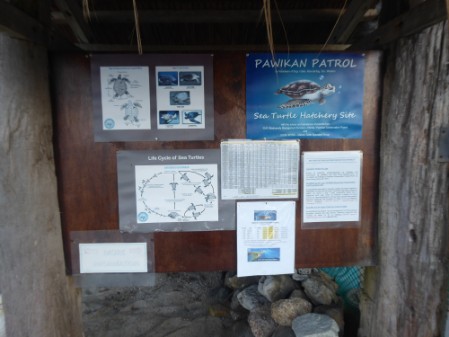
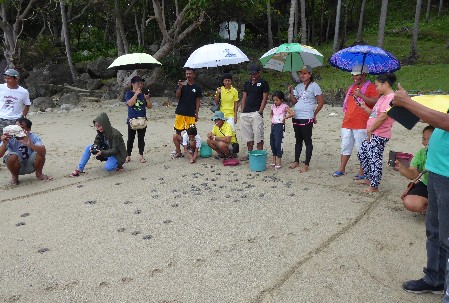

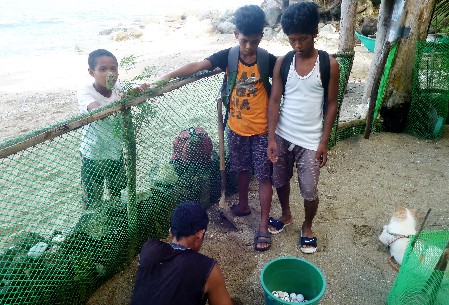
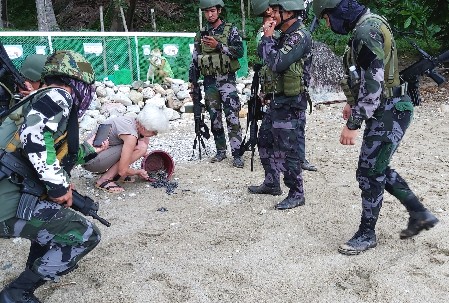
Photo credit: Alexandre Richard (June 2020)

Photo credit: Felix Cybulla (Ivakale/February 2020)
Capacity Building
Engaging the Youth
Even without funds for child-specific workshops, there are still many opportunities for kids and teenagers to be actively involved in the project. Under supervision and with easy-to-understand explanations, the kids are eager to accomplish the given tasks.
It is encouraging to observe their enthusiasm; how they absorb, remember and proudly pass on their newly gained knowledge to friends, class mates, teachers, siblings and parents - thereby widening the circle of informed and interested people.
Hopefully, some of these children will maintain their interest in the protection and well-being of our local wildlife, choose to continue with their studies and become professional environmentalists later on in their lives.
Creative Activities
Marine Turtles and their terrestrial relatives are a source of inspiration to many artists - and our talented community members are no exception.
Here are three handicraft examples. All items are based on the use of natural materials, such as discarded coconut shells, vines and stems of woody climbing plants, beads from dried seeds and pieces of drift wood.
Created by Mr. Ederlando A. Gines from Udalo
A money purse made from dark and light colored coconut shells:
Using a coconut's natural shape, the artist has imitated a sea turtle's scute pattern on the carapace and plastron pieces, then added head and flippers and joined the parts with a zipper.
Created by Miss Nenita Butulan from Udalo
Udalo's ethnic group of Iraya-Mangyans is well-known for traditional basket weavings. Using natural materials, such as nito vines, they usually incorporate intricate geometric patterns - but here is a hand-held fan depicting a stylized sea turtle!
From the collection of M. S. Webb
Slightly smaller than a pawikan hatchling this ornamental sea turtle was carved out of drift wood some 40 years ago - with particular attention to the stylized carapace pattern and the raised head with open mouth.


























